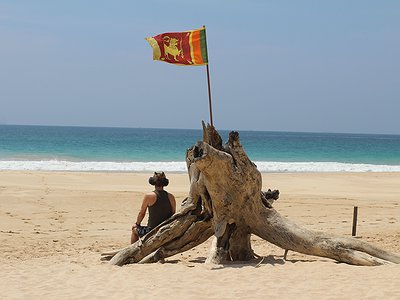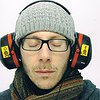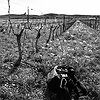What was your first studio like? How and for what reasons has your set-up evolved over the years and what are currently some of the most important pieces of gear for you?
My “indoor studio” is very similar now to what it was like 18 years ago, when I started music/sound production. The reason is that my professional activities have always driven my technological choices in terms of mobile configuration/gear. I need to bring my project everywhere I go and, especially, in the public spaces where I am playing live “re_COMPOSED re_ALITY”: my latest performance. In this “mobile re_COMPOSITION of the soundscape shared live in situ”, I need a powerful laptop to improvise with and to modulate and frame the real soundscape flux. So you could imagine that reducing the latency as near as possible from zero (...) is the first tech challenge of this project.
In a different way, my needs in terms of sound treatment are decreasing year by year. After spending half of my production time to test and explore a lot of plugins (1999>2010) and having developed multi-channels (mostly octo-phonic) interfaces in Max-MSP (2004>2010), I'm now able to use (almost) only Ableton Live’s native plugins, since 2010 (sound designer go your way... ;-p) ! Since then, I have re_centrated, and con_centrated, my work in field recording. The only gear I need to compose (now) is an editor, a sequencer with EQ, a few filters, reverb, distortion and a couple of mastering tools.
My fieldrecording/phoNography practice has other needs ... It is my “in the field studio”! Here we have to think/talk in terms of usage, versatility and portability. My lighter and everyday configuration is a Zoom H4n + Soundman OKM II Classic/Studio Solo. I recently bought a pair of Sennheiser MKH8020 & 8040 to increase the quality and the versatility (omni/cardio - ortf / xy / ab ) of my recordings in the most common recording' ”situations”. A Schoeps CMC5U with a hyper cardio capsule completes this basic setup to isolate some sounds from the environment. But I don't like to work with this kind of microphone too often. Sorry, but I'm not a big fan of mono sounds :-/ I like sounds full of space: I love sounds that can “breathe”.
In my listening/recording setup, I would not forget to talk about contact mic, hydrophones and pick-up coil (for electromagnetic fields). These microphones/transducers are very important to auscultate all the “invisible” environments. Listening with a contact microphone is like putting your ear(s) on the surface of the sounding object. With good pre-amps you can amplify the signal very loudly without bringing a lot of self noise, then you can hear unexpected vibrations, events, rhythms, melodies contained/disseminated by the resonant object (metal/wood/plastic/ what you want ...). Hydrophones immerse your ears into the aquatic flux, let you explore the world of underwater insects, fishes, whales but also to listen to a boat's motors bass drones, aurally surfing into the waves or hearing them under the sand, or finally hypnotising yourself with the rhythm of the plants breathing ... Finally, pick-up coils (electromagnetic censors) are a curious - and most of the time - creative, way to explore the flux of electric particles being in motion everywhere around us. When you start to auscultate your everyday life environment with this kind of censors, it's a great pleasure (mixed with a bit of fear ...) to play with the different range of radiations emitted by a simple object like a neon or a telephone, or to try to isolate one of the tones of this “ready made” polyphonic electronic synth. In this task the “Elektrosluch” by Jonáš Gruska (LOM) is a must-have.
Finally, the non-negligible part of my gear is the headphone. You might be surprised - or maybe shocked - if I told you that my headphones are more important in my studio (production set-up) than my loudspeakers ... Because this is my listening auxiliary, in all occasion, and maybe more since 2010, when I started specifically to compose for headphones. So I need it from the start (recording: Sennheiser HD25) to the end (mastering: Beyer DT880 Pro).
How do you make use of technology? In terms of the feedback mechanism between technology and creativity, what do humans excel at, what do machines excel at?
I am just using technologies as tools. I am not interested in tech challenges only for the sake of tech challenges: testing every last piece of technology and changing my phone every year ... no thank you! I am just searching for the right technology to reach my project's goals. I don't spend too much time to improve new technology; I prefer to listen, to record, to compose, and meet my audience. But when you try to realise your dream, or your artistic intuitions, and you don't find the tools you need on the market place, you have to (try to) do it yourself ...
When I was composing in octophony from 2006 to 2010, I was forced to develop some Max-MSP's patches (based on “Holophon“/”Holospat“ GMEM 's platform) to be able to do what I really wanted. You know, at that time (10 years ago), spatialization' software was rare or in its first step of development. The same when, in 2005-2006, we (Leos Ator & I) decided to create “Station(s)”: a performance where the poetry flow was re_composed live by the mediation of a dancer's body. Here, the dancer’s movement spatialised the sound in a 4.1 channel configuration and, then, altered both the flow of the voice live and projected the poem's words on a wall screen. Here again, I developed a Max-MSP patch that allowed us the possibility to do everything we dreamed of in term of real-time sound treatment and movement analyses for the needed interactivities. We had the great pleasure to use the Kroonde (developed by La Kitchen): a complete versatile system of wireless HF body censors: a great time for interactive body / sound explorations! But how many hours/days/weeks were “lost” in patch development, tests, debug etc. for so few times of experimentations on the stage ... Since 2008, I decided that I needed more time for my artistic work, less to deal with patching. So, I started to develop shows (sound walks) that require less tech development. Since then, I only work with Ableton's Live DAW.
When I started to imagine „re_COMPOSED re_ALITY“ (2012), I understood that I would have to deal with technologies again ... But as always, I was thinking in term of needs, not in term of “the last must have technology”. At first, I needed a nomadic studio: a mobile re_composition platform (so we worked with a constructor to make it real). Then, I started to think about a way to reduce the general latency of our sound chain without destroying too dramatically the sound signal. Then the old FM tech appears to be the best solution (in term of latency & economy ...) to equip 20 to 25 listeners. This performance needed a lot of tech adjustment to be really efficient and stable. But, now, we are happy to be able to play with the real sonic environment and share this experience in situ by walking everywhere with the public.
Dealing with sound technology is always thinking in term of listening … Augmented? Reduced?? Does this listening “prosthesis” offer me new perspectives of unheard experiences or just a loss of time, a loss of presence, of curiosity? Or do they (mics/ amps / recorders / DAW / plugins / headphones / speakers...) improve my listening experience? And as much as I like to use and mix different listening technological dispositives, I always enjoy listening with my real unplugged and immersive organic ears.
Finally, to answer to the last part of the question in the domain of technology, may I say that humans excel at inventing projects that machines help them to realise? But I can also say that machines and new technologies invite us to invent new projects and to ask ourselves new unheard questions ...
Production tools, from instruments to complex software environments, contribute to the compositional process. How does this manifest itself in your work? Can you describe the co-authorship between yourself and your tools?
In my last sound works & compositions, I always use the most simple, light and efficient creative DAW environment for simple and efficient creations. I already talked about my needs before: a sound editor, a sequencer with native plugins: and nothing else! Basic headphones (HD25) and comfortable monitors (Adam A5X + Prodipe Pro 10s woofer). No more, no less. With this very basic configuration I am only focusing on the composing/listening process. This guides me from the start to the end of each project.
I am working more on the “dramaturgy”, the intensity and the tension of my pieces than the processing itself ... I can basically compose only via cutting/mounting/mixing techniques and the use of compressors, saturators, filters and eq. I prefer (for now) to focus on the flux, the energy, and the rhythm of the piece instead of loosing myself (and maybe my pieces) in heavy sound treatments and electro acoustic “dérives”.
For now, my creative desires are fed by increasing my connections to the real environment. To try to realise this goal, I need sensitive censors, good ears and a quality of presence (conscience & availability). So the “co-authorship between myself and my tools” is much more concentrated in the listening process. In situ (“in the field”), all that engages, enhances, increases, modifies, frames, modulates my listening is welcome. I like to explore the sonic environment with censors that give me a new, an extra and deeper sensitive mode of listening. Sometimes I “only” need to capture a sample about what I'm hearing here and there. But I often need to go deeper, closer, inside the sound and I need the tools that bring me there.
Only with the choice of microphone and the choice of its placement, you're about to create a point of listening, a sound framework. You are definitely starting to compose. This moment is crucial! Despite the fact that you could do a lot of things in postproduction, the thing you couldn't change is this unique moment when you start to press the record button and when you press stop ... Those are the two unique instances you're about to start to con_cert with the “real” created by the “machines”. Too much proximity and your subject might get burned or might fly away; too much distance and your sound partner is like a blurry point lost in the soundscape ...
But let me introduce you to the best thing I really love to do: “mixing in situ”. What does it mean - in my own language? “Mixing in situ” is the best situation for me to experiment with this relation of “co-authorship” between my tools, the sound environment and myself. Imagine a bridge crossing the ending meanders of a mangrove (the place where the mangrove meets the sea) in a noisy road environment in Galle (Sri Lanka). We are listening on the middle of the bridge, putting the sound bag on the floor. The junction of the two parts of the bridge is partly broken and a rhythmic metallic noise is audible in the flux of the circulation each time a car or a truck is passing exactly on it.
1#_Let's try to record this sound “realistically” with two omni mics (DPA 4060) fixed (AB) on the bridge platform. Then, 2#_ put two contact mics on two metallic parts of the bridge that sounds a little different: one like a sub bass, the other in a low-medium tone. 3#_Press record and start to mix in situ (in real time / live) these two sound flows. Cross fade from “open” ambiance to “close contact” auscultation, use all the possibilities of your recorder/mixer: low cut, pan, comp level ... to create some musical events in your improvisational composition. Without stopping the stereo recording, now 4#_Immerse quickly two hydrophones in the mangrove to add some crispy shrimps sound to your mix. Cross fade to shrimps in solo, then give more and more low frequencies, quickly pass by the low-medium mono contact ambiance then immerse into the omni “ambiance” by a long high pass crossfade. Press stop after a beautiful “klang” resonance of the platform, enhanced by your "sub" contact mic loud in the mix. This is what I call: “mixing in situ”.
What I really love in this kind of “recording performance” is the engagement in the act of listening, the presence it requires, and the “risk” you take when you're only recording the master track (I was recording with a SD552 stereo mixer). When you get back to the studio and listen to the recording session, you quickly know what kind of materials are here now: ready to share if you were “in a good mood” with the "real" and the "machines"; or ready to be discarded if you didn’t!!! But, yes, indeed: postproduction could help us recycle a lot of rubbish ...
Collaborations can take on many forms. What role do they play in your approach and what are your preferred ways of engaging with other creatives through, for example, file sharing, jamming or just talking about ideas?
It's always a pleasure (and a challenge ...) to share projects with other people and to be involved in projects that are not yours. I've been part of the “Urbaphonix” team (Décor Sonore) since 2011 and it is very funny to mix in mobility this urban ambulatory musical performance play by 3 street-jockeys’. In the past (2006>2010), I was used to working with other Street Art Cies (Dance/ Theatre/Performance), enjoying to compose, then diffuse my multichannel pieces in an intimate connection with the “stage interpretors”. But I soon noticed that sound in this kind of shows is very often the “fifth wheel of the coach” and always (only) connected with the “stage” but not enough imho with the specific environments ... So I decided in 2008 to create my own artistic company oriented in contextual environmental sound art. With only two main protagonists: sound and space: “Espaces Sonores”. In this context, it was more pleasant for me to think in term of collaborations : collaborations only focused on connections between sound and spaces (and not in the goal to help the “interpreters” not to be alone, or nude, on stage ...).
It is so exciting to be able to invite people whose work you appreciate, people who are more skilful than you, to be part of your projects. I appreciated so much the way Emmanuel Ménis or François Dumeaux gave their electroacoustic touch to the “An Umbrella for 2” soundwalk. It was so inspiring for me to co-compose (& co-write the poetics parts of) these sound walks with these composers. It's so troubling to assume the artistic direction and give the orientation to somebody else work when it's about your own skills ! But it's a good way to let your collaborators impress you and it's always so delicious to let them surprise you and sometimes it makes you change your path or just go a little bit off-road ...
On the occasion of the creation of “re_COMPOSED re_ALITY”, I was looking for a “recordist” that might not only be a master in the art of auscultation of the (urban) sound(scapes) but who could send them live (HF) to me without any undesirable noises, with quality (signal) & precision (mvt – partition) and with some other extra quality – such as being reactive with the sound environment (to be like a listening beast on the “look-out” - “listen-out” ... - ready to jump on all the pertinent sounds) but always be at the “rendez-vous” for the next scene; Frederic Nogray recommended me Pali Meursault, probably the best person to cope with this challenge!
I've also become adept at “file sharing”projects the last years. One “ping-pong” project with Ludovic Medery (to be released asap on Gruenrecorder), and one collective “file sharing” (involving 10 musicians!) initiated by Christophe Petchanatz. I enjoyed the slow maturation (like a sound composting ...) of this kind of collaborations. With the patience required to welcome the proper time to respond (pong), add the confidence, the respect you accord to your partner(s) in his/their artistic choices (ping).
To conclude, I'm responding to a lot of “calls for contributions” as soon as the project sounds interesting, poetic or clever to my ears. As I'm inviting my fellow recordists, soundscape artists, and composers to contribute to my own collective projects (like “Each Morning of the World”: a PhoNographic tour of the world's mornings). This curatorial work is a new dimension in my “collaborative works”: it's another way to communicate with people, at the connection point between locations, artists and audiences. “Bref” ... here as elsewhere, it's a question of listening(s) ...
Could you take us through a day in your life, from a possible morning routine through to your work? Do you have a fixed schedule? How do music and other aspects of your life feed back into each other - do you separate them or instead try to make them blend seamlessly?
I don't have any morning routine. My work requires me to move in residency places (far away from home), where I am working on different kinds of productions. When I am home, first I have to take care of my family (2 very young boys).
What’s my work in reality? Nothing really sexy ...
25% of prospective sources of funding and artistic and technological development, …
25% communication, mailing, phoning, networking, …
25% organisation, scheduling, budget, applications, …
25% sound (recording / production, writing about, reading about, learning about).
Actually, the act of listening - which never abandoned me a long time - is my daily discipline: a kind of yoga of the ears, a sensitive meditation in act.





